Today is part one of a two-part interview with Kieran Schnabel, a music thanatologist with SacredFlight (a not-for-profit charitable organization of certified music thanatologists). Kieran is located in Oregon, and grew up practicing and studying music. He is now a full time music thanatologist, and was kind enough to share some of his story — along with more information on music thanatology’s mission and practice — with SevenPonds.
Augusta: Hi Kieran, thank you so much for talking to SevenPonds! First and foremost, how would you describe music thanatology?
Kieran: Well, when I’m just talking to people about it without much jargon, when I’m just talking to people and to their families, I say it’s a musical specialty where we bring music in to support the patient and their families in the time of death and as they die. And generally it’s toward the very end of life, but it can be longer, any time generally when someone is on hospice. We generally serve the population that’s at the very end of life. What’s interesting about music thanatology, what’s different from a lot of other music specialties, is that we don’t often use familiar music, and we don’t generally use entire pieces of music. We use the pieces of music, such as rhythm, melody, or lower registers of sound, low notes, high notes, tambour, you know, all those elements, and we decide in the moment — based on what we’re observing in the patient and the family — how to use those pieces to support them in their process. And we’re not trying to fix anything that’s going on, with either the patient or the family. We’re just trying to support them where they are, which I love. The idea is always to support, not to influence their decision making in any way. You go in, and you take a look at what’s going on and you do the best to support them however you can with music.
Augusta: How did you get involved with music thanatology, and what made you want to pursue a career in it?
Kieran: I began with going to school for music. I went and got a masters of vocal performance from the University of Oregon, and I had in mind to keep going and get a graduate degree in choral conducting. But, through my studies, I realized I didn’t want to make a career on the stage. I’ve seen and met a lot of people in the performing arts who went on stage, got under the lights, got in front of all those people, and it just…it just fed them something that they really, really craved. And they totally lit up and they thrived. And for me it wasn’t that way. At first I had stage fright, and you know you kind of work through that and keep going, and then you become confident in what you’re doing. And I did that. And I could’ve gone on — my teachers wanted me to keep going in performance — but I ended up feeling like I wasn’t one of those people who really, really enjoyed being on stage. So then I decided that I still needed to find a way to use music in my career, because music was absolutely my passion, and I felt like I had something to offer. I was exploring my options and I came up with either music therapy or music thanatology as something to pursue. I went on and found the music thanatology program, which is put on by Lane Community College — or, that’s who hosted it. It’s a two-year, graduate level program and I did a lot of internship hours, clinical hours in a hospital setting with a mentor, then hours on my own, and that was great. It’s definitely a lot different than being on stage and offering music as a performance.
Augusta: I noticed something on Sacred Flight’s website, mentioning how a music thanatologist responds musically moment by moment during a vigil. That’s so amazing. How do you even go about doing that? Have you just gotten to a place where you can feel what you need to do? Is it intuitive?
Kieran: Yeah, it’s a really interesting thing to break down how that works. But, in essence, what we do is constantly try and observe, to watch for any signs of things we can use to help influence our choices musically. It’s a constant state of decision-making: Where is this music going? How can I choose what’s best suited to this moment and to this patient? That was a really interesting part of training, because I think we have a natural inclination to try and fix any problems that we see.
Augusta: Sure, it’s human nature I suppose.
Kieran: Right, exactly. But we’re not here to do that. We’re not trying to fix something — even educating people on that is difficult. People will ask us to come in because patients are having trouble with their breathing. And often music thanatology can make a patient’s breathing even out or become easier. It’s a common thing that happens with music. I think it can be tied to all the rhythms of the body. Breathing is a very obvious rhythm of the body, and music has rhythm, even when you make it as arrhythmic as possible, it’s still possible for it to influence breathing. If you put two things near each other that have similar enough rhythms they’ll synchronize. (Laughs) Sorry I got off topic there! But the idea is that we get called in to deal with things like that when it’s not really our purpose – we’re not going in with the goal to try and fix things, which is the biggest difference between music thanatology and music therapy. We come in to support a patient in their process from life to death.
Augusta: As far as the music goes, I know you said it’s never well-known pieces or whole pieces. But what instruments are usually used? Does that depend on the music thanatologist themselves? What’s the norm and why?
Kieran: The instruments used are traditionally just harp and voice. That’s generally how it’s practiced. I think it’s going to evolve and probably already has. I use to serve kids in a children’s hospital, and I wasn’t working for an organization that would call me a music thanatologist. But I shared some of my experiences doing that work with the music thanatology community and told them, “This is what I’m doing and I believe this is music thanatology as well.” And when I was playing for those kids and their families, I would play familiar songs. I would take requests. I played on the ukulele and I sang. And I think that, in terms of the mission of what music thanatology is, it’s essentially being fulfilled. I don’t think it matters what instruments really, but harp and voice are the traditional ones. As long as it meets the needs of the patient and family as they transition. But, in regards to the music, the reason we tend to play unfamiliar music is because, if you play music that’s familiar to someone, it grabs their conscious mind. But if someone were to play music around you that didn’t have words or used words that you didn’t understand or know — if it’s unfamiliar — it doesn’t grab your attention as much. And then you’re not thinking about what they’re saying, you’re not distracted. The reason we generally use unfamiliar music is that we’re offering support without asking the person something in return. We don’t necessarily want to grab their attention. It isn’t a performance.
Be sure to check back next week for the second part of our interview with Kieran!

 How Can Music Provide Comfort in End of Life? An Interview with Kieran Schnabel, Part One
How Can Music Provide Comfort in End of Life? An Interview with Kieran Schnabel, Part One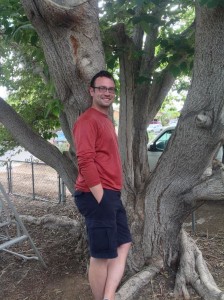
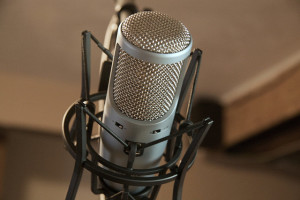
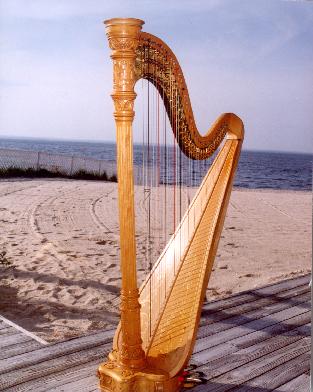


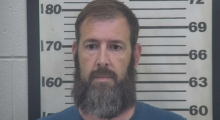
 Funeral Home Owner Chris Johnson Spending Halloween in Jail
Funeral Home Owner Chris Johnson Spending Halloween in Jail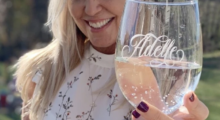
 Our Monthly Tip: Toast a Loved One with a Personalized Glass
Our Monthly Tip: Toast a Loved One with a Personalized Glass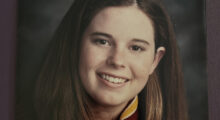
 My Cousin’s Death Taught Me the Meaning of Life
My Cousin’s Death Taught Me the Meaning of Life














